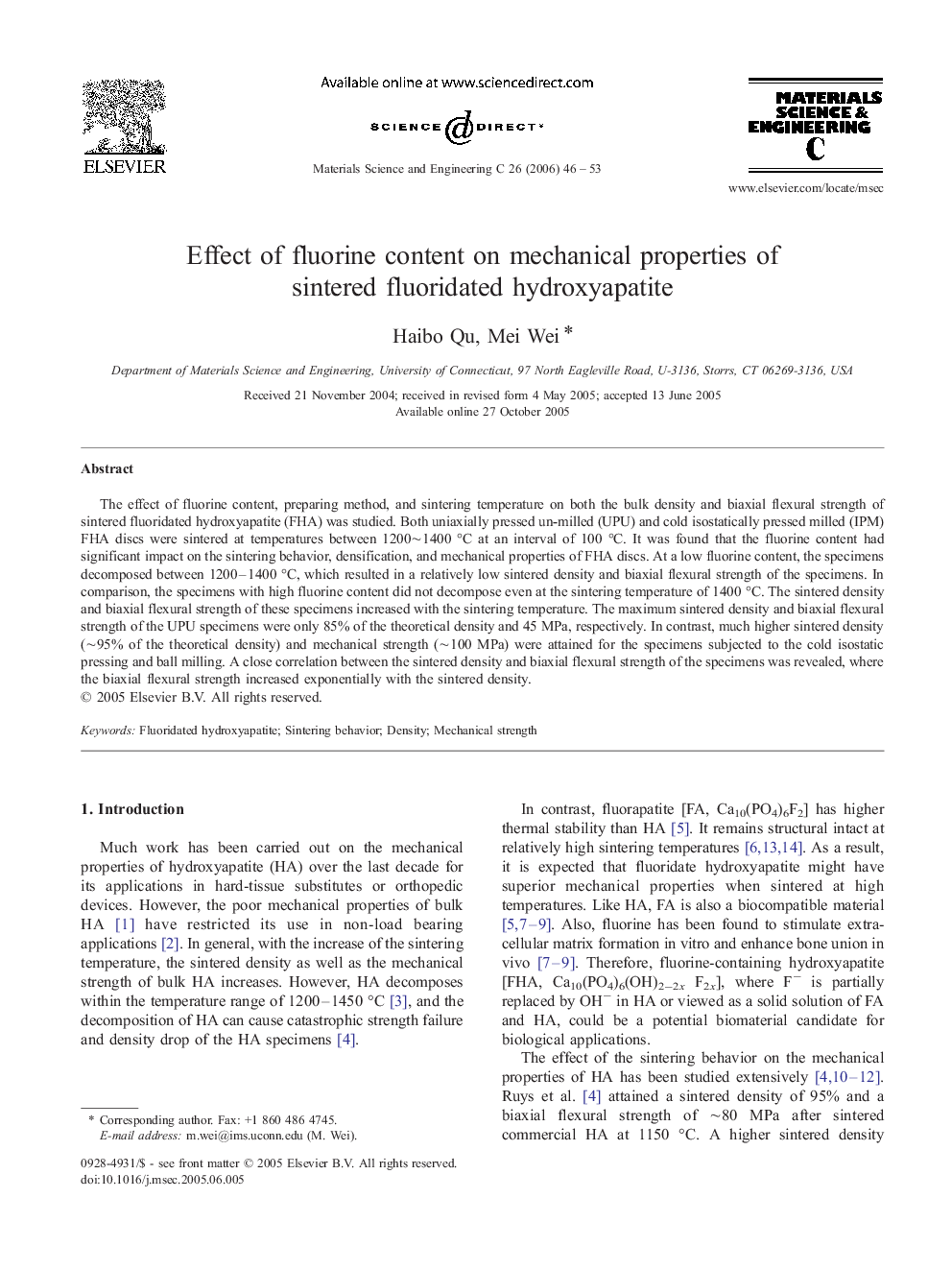| Article ID | Journal | Published Year | Pages | File Type |
|---|---|---|---|---|
| 1430532 | Materials Science and Engineering: C | 2006 | 8 Pages |
The effect of fluorine content, preparing method, and sintering temperature on both the bulk density and biaxial flexural strength of sintered fluoridated hydroxyapatite (FHA) was studied. Both uniaxially pressed un-milled (UPU) and cold isostatically pressed milled (IPM) FHA discs were sintered at temperatures between 1200∼1400 °C at an interval of 100 °C. It was found that the fluorine content had significant impact on the sintering behavior, densification, and mechanical properties of FHA discs. At a low fluorine content, the specimens decomposed between 1200–1400 °C, which resulted in a relatively low sintered density and biaxial flexural strength of the specimens. In comparison, the specimens with high fluorine content did not decompose even at the sintering temperature of 1400 °C. The sintered density and biaxial flexural strength of these specimens increased with the sintering temperature. The maximum sintered density and biaxial flexural strength of the UPU specimens were only 85% of the theoretical density and 45 MPa, respectively. In contrast, much higher sintered density (∼95% of the theoretical density) and mechanical strength (∼100 MPa) were attained for the specimens subjected to the cold isostatic pressing and ball milling. A close correlation between the sintered density and biaxial flexural strength of the specimens was revealed, where the biaxial flexural strength increased exponentially with the sintered density.
